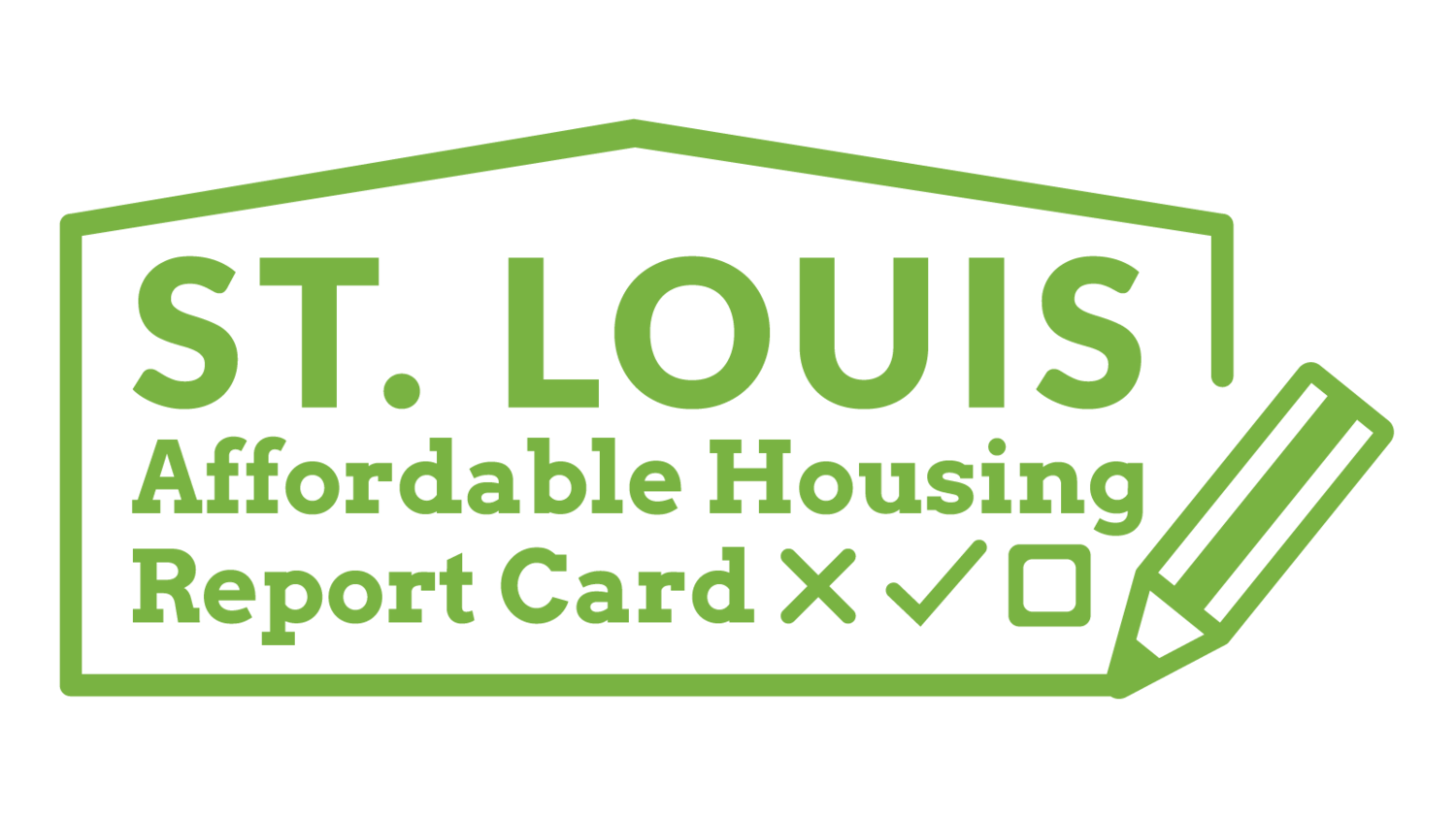
2.2 Supporting Mobility
HIGHLIGHTS
There are 13,060 housing vouchers in use in St. Louis City and County.
2.2% of all households use a housing voucher in the St. Louis region.
42% of vouchers are used in five municipalities in North Saint Louis County: Florissant, Ferguson, Spanish Lake, Jennings, and Bellefontaine Neighbors.
Only 9.2% of voucher holders live in census tracts considered “High Opportunity Areas.”
The largest municipalities that do not have any households that use vouchers are Wildwood, Clayton, Town and Country, Ladue, and Brentwood.
Overview
The purpose of housing mobility programs are to help low-income households (typically families with children) move to housing units of their choice, in areas with higher-performing schools, lower crime rates, and/or better jobs. The primary tool to support household mobility in our region is the Housing Choice Voucher program, which provides rental assistance to low-income households to access housing in the private market. Housing vouchers are the most common form of subsidized housing in the St. Louis region. There are 13,060 housing vouchers currently in use which equates to 51% of all subsidized, affordable housing units.
Housing Choice vouchers, of all forms of subsidized housing, are the most likely to be used or located in majority-black census tracts, where Black residents are more than 50% of the area’s population. Section 8 Project-based vouchers are the form of subsidized housing that results in the least racial segregation of affordable housing opportunities in the St. Louis region.
This section will discuss ways in which we can measure success for housing mobility programs like vouchers, including:
Supply of Housing Vouchers
Household Choice: Effectiveness of Vouchers
Regional Support for Mobility
Opportunity: Supply of Housing Vouchers
Housing Choice vouchers are allocated to Housing Authorities on an annual basis by HUD. Housing Authorities distribute new housing vouchers to eligible applicants off their waitlist, of which 75% must have household incomes less than 30% of AMI.
The Housing Authority of Saint Louis County (HASLC) last opened its waitlist in March 2020, when they accepted 6,000 new applicants. In 2020, they issued an additional 700 housing vouchers. HASLC uses a random lottery system to invite applicants from their waitlist to attend an orientation and submit online documentation. According to internal HASLC records, 68% of applicants fail to respond to this follow-up notification at this time, typically because they have moved and have not updated their contact information with the Housing Authority and they do not have a forwarding address.
HASLC issues vouchers to income-eligible applicants and the applicant then has 120 days to find housing before the voucher expires. On average, it takes 2.3 months for households to secure housing. HASLC annually recertifies each voucher recipient to ensure they still meet eligibility requirements, including household incomes no greater than 50% AMI. They currently sponsor 2,511 housing vouchers.
The St. Louis Housing Authority (SLHA) last opened its waiting list in 2014, which at the time received 27,114 applications. Today, the waiting list has decreased to just under 19,000 applicants. In 2021, they expect to issue an additional 100-200 vouchers and SLHA processes applications in order of the date/time indicated in their application, with a preference for applicants who are involuntarily displaced by natural disaster or government action, disabled persons, victims of domestic violence, and/or families that are homeless. SLHA has issued 4,464 vouchers since 2011. Similar to HASLC, many applicants have out-of-date information which can mean they have moved out of the region, increased their income, or even are deceased.
While the rate at which Housing Authorities are able to issue new vouchers is very unpredictable, we know the opportunity to receive a housing voucher in St. Louis today is slim. Since 2011, the St. Louis Housing Authority has had an average annual issuance rate of 446 vouchers per year. At that rate, their current waitlist is 42 years long! The Housing Authority of Saint Louis County, using its 2020 application pull rate of 700 applications per year, has a waitlist of 15.5 years.
Household Choice: Effectiveness of Vouchers
In the Housing Choice Voucher Program, recipients are responsible for locating housing that can pass a housing inspection and whose landlord will accept vouchers. 92% of housing voucher recipients are able to find housing within the prescribed time limits within St. Louis City and County.
An important measure of success for housing choice means that there are affordable housing options to rent or purchase wherever people want to live. In theory, housing vouchers allow low-income households to live in neighborhoods other than those where public and subsidized housing is concentrated.
Housing vouchers are predominately being used in the following municipalities in Saint Louis County:
Florissant - 811 vouchers - 4.1% of households here use vouchers
Ferguson - 693 vouchers - 8.5% of households
Spanish Lake - 650 vouchers - 9.4% of households
Jennings - 589 vouchers - 9.0% of households
Bellefontaine Neighbors - 453 vouchers - 11.1% of households
These five municipalities alone capture 42% of all vouchers in use in the St. Louis region today.
The largest municipalities without any residents that use housing vouchers include Wildwood, Clayton, Town and Country, Ladue, and Brentwood.
Housing vouchers are used by 3.7% of households in St. Louis City and are most commonly used in the following neighborhoods of St. Louis City:
Downtown
Gravois Park
Downtown West
St. Louis Place/Jeff Vanderlou
Mount Pleasant
High Opportunity Areas
AscendSTL is a housing counseling program, now housed at the Housing Authority of Saint Louis County, that seeks to place families with vouchers in “High Opportunity Areas.” The program has a goal of moving 400 families into High Opportunity Areas and is currently participating in a research study by the Robert Wood Johnson Foundation to evaluate the effectiveness of their program services in achieving this goal.
As of 2020, 1,290 voucher households or 9.2% of all voucher households in the St. Louis region live in High Opportunity Areas.
Regional Support for Mobility
There are many places in the St. Louis region where there are none or close to zero housing vouchers in use. This may be because of several reasons, including a lack of rental housing to discrimination against low-income tenants. Therefore regional support for mobility programs can be demonstrated through passing policies such as source of income protections and inclusionary zoning.
Source of income protections
Landlords or property managers can choose to discriminate against households who received government assistance, such as a housing voucher. While some landlords may state they do not want the hassle of having an additional quality inspection by the Housing Authority, others simply do not want low-income tenants even if the voucher enables them to pay the rent in full.
Municipalities and county governments can choose to pass legislation that adds source of income as a protected class from discrimination in its local Fair Housing law. The state of source of income protections in the St. Louis region are as follows:
St. Louis City - enacted February 2015
Clayton - enacted August 2019
Webster Groves - enacted 2019
Maplewood - briefly under consideration
Saint Louis County (would have applied to unincorporated Saint Louis County) - proposed and withdrawn in August 2019
41% of renter households are protected from source of income discrimination in the St. Louis region.
Inclusionary zoning
Municipalities have traditionally used zoning to prevent the development of affordable housing in their communities. By preventing higher-density construction, such as multi-family housing, residents ensure that new construction can only be affordable to homebuyers. Proactive inclusionary zoning policies for high-density housing projects require a standard set-aside of affordable units, typically between 10 and 20 percent.
There are no municipalities in the St. Louis region that have inclusionary zoning policies.
Rental Registries
Rental registries require landlords to register with the local municipality, report their asking rent, and indicate their capacity to house tenants with special needs such as the disabled. An alternate measure of regional support for mobility programs would then be to track the percentage of landlords that have or have had housing voucher recipients as tenants.
There are no municipalities in the St. Louis region that have a mandatory rental registry.
Data Recommendations
In order to better measure support for mobility, we recommend…
Housing Authorities track the number of applications reviewed and vouchers issued annually.
Municipalities track the number of landlords accepting housing vouchers.
An organization tracks which municipalities offer source of income protections.
An organization tracks which municipalities support inclusionary zoning.
Source: Ascend STL





